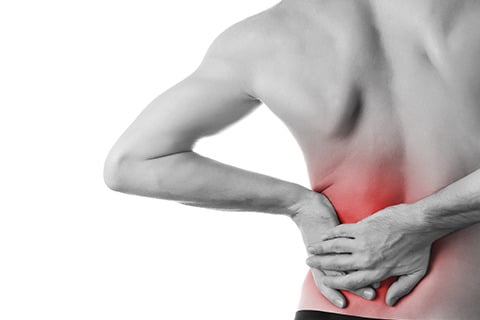Chronic low back pain (CLBP) is a chronic pain syndrome in the lower back region, lasting for at least 3 months. CLBP represents one of the leading cause of disability worldwide being a major welfare and economic problem. The prevalence of CLBP in adults has more than doubled in the last decade and continues to increase dramatically in the aging population, with a significant impact on functional capacity and occupational activities. It can also be influenced by psychological factors, such as stress, depression and/or anxiety. Given this complexity, the diagnostic evaluation of patients with CLBP can be challenging and requires careful clinical decision-making The various pain generators in the lumbar spine include:-
Discogenic Pain- This probably is the most common type of low back pain. This pain is generally limited to the lower back or is axial in location. Consists of outer annulus fibrosis and nucleus pulposus within. When the disc undergoes desiccation or dehydration this nucleus purposes migrates out through defects in the annulus. This leads to increased localised vascularity and nerve innervation giving rise to the classic discogenic pain.
Radicular Pain- When pain radiates from the back, buttocks and to the lower leg( also popularly known as sciatica) it generally indicates radicular pain. This may happen to due to ectopic discharges being emanated from the dorsal root or it’s ganglion. Most commonly it is due to a disc herniation. More commonly the pain is seen due to the inflammation of the nerve root than actual compression of the nerve root. A correlation between clinical findings and MRI findings is usually sought to arise at a diagnosis.
Spinal Stenosis- This essentially involves progressive narrowing of the central canal and the lateral recess which can cause compression of the spinal cord and associated neurovasscular structures. It can be caused due to disc herniation,thickening of the ligaments, overgrowth of the articular processes, scar tissue from previous surgery to name a few. Typically there is neurogenic claudication, altered sensation and motor weakness at times. Patients have more pain on prolonged standing or extension of the spine whereas they feel much better on forward bending or stooping.
Facet Joint- These are joints in the back through which the vertebra articulate with each other and like other weight bearing joints in the body undergo arthritis. Pain typically is near the midline and patients experienced low back pain which does not usually extend beyond the buttocks. “facet” joint pain has been estimated to account for up to 30% of CLBP with nociception originating in the synovial membrane, hyaline cartilage, bone, or fibrous capsule of the facet joint.
Sacroiliac joint disease- These joints connect the spine to the pelvis. They are rigid contributing to stability and allow only minimal movement.The pain typically is in the region of the posterior superior iliac spine and sometimes may radiate down but does not usually go all the way down like true sciatica. Aggravated by sitting for long and disturbances in sleeping and sitting postures are noted. The pain can come from the arthritic bony surfaces, capsular distension, inflammation of the fascial or tendinous portions of the sacroiliac ligaments, hyper mobility of the joint due to sustained exposure to shear forces.
Piriformis syndrome- This can lead to sciatica like symptoms with pain more in the buttocks due to irritation of the sciatic nerve due to spasm of the muscle.
Some of the other pain generators are
Thickening and inflammation of ligaments like the ALL,PLL and Interspinous ligaments
Fractures
Trigger points or myofascial pain





